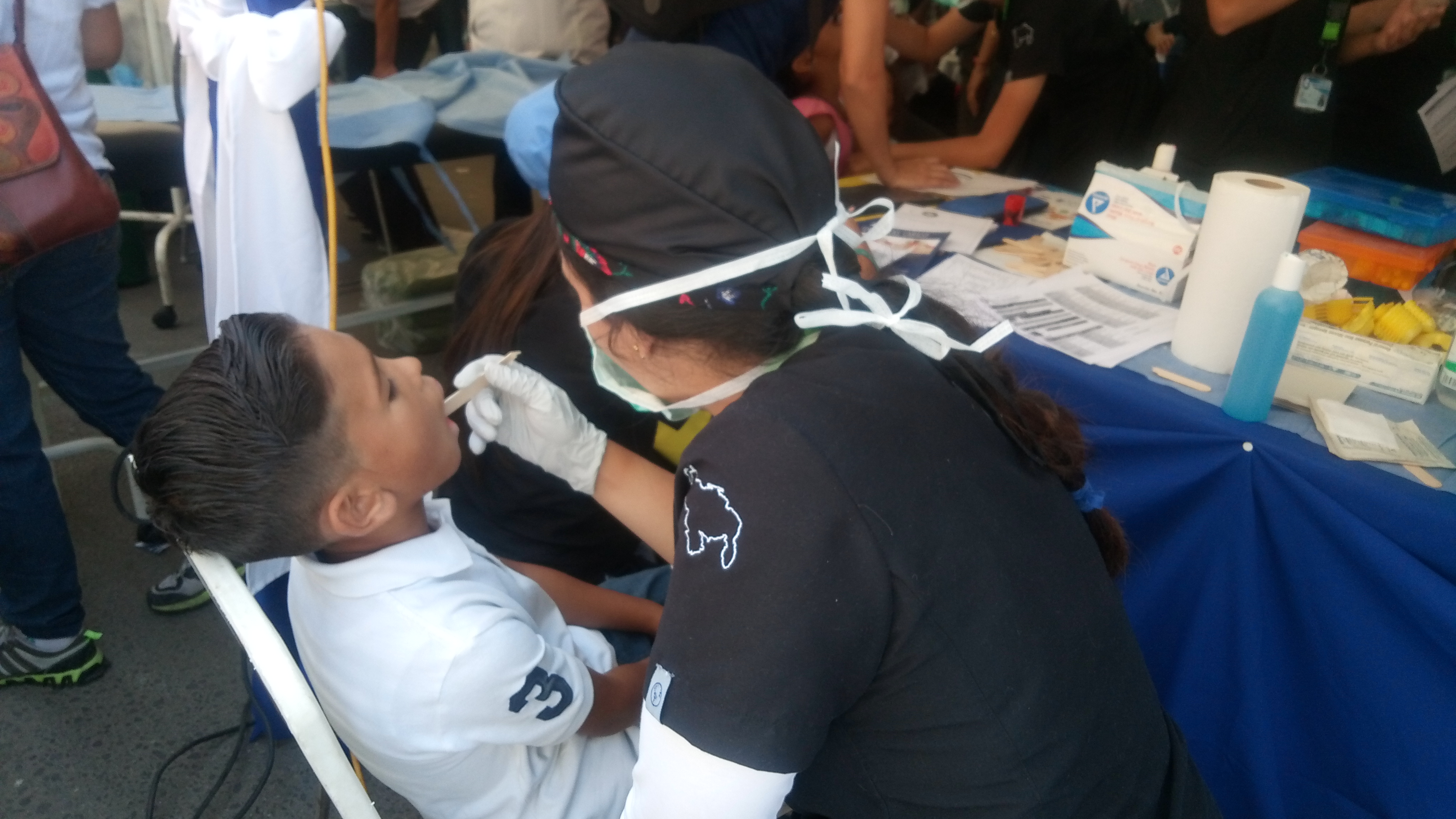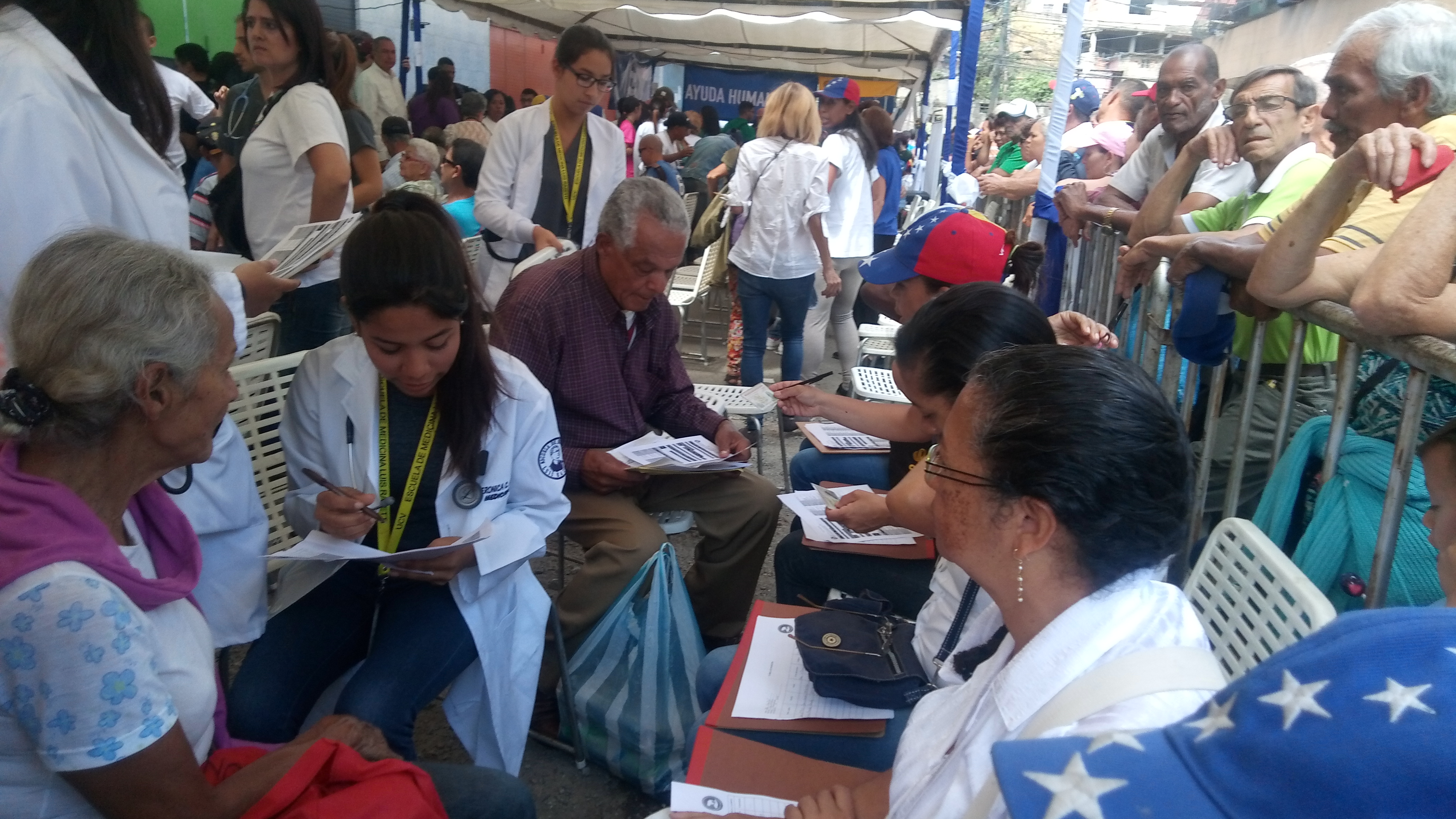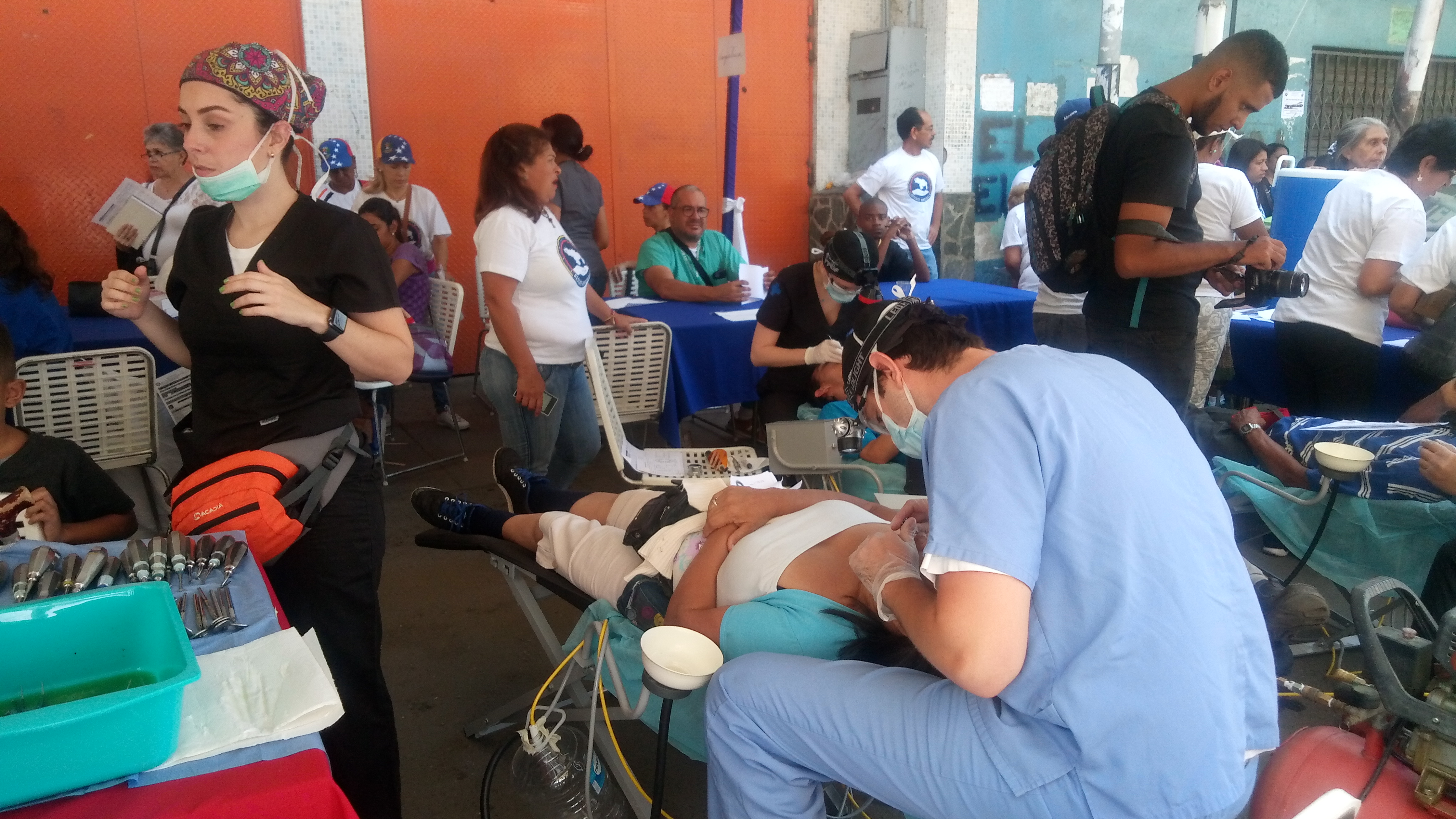A Look into One of the Camps of the “Humanitarian Avalanche”
Rescate Venezuela was the NGO that started the engines for the entry of the humanitarian aid. This Sunday, February 17th, the humanitarian camps exercise officially began. This is the chronicle of one of them in Macarao, Caracas.


Photos by the author.
People with walking sticks, disabilities, holding kids in their arms (who sometimes suffered respiratory problems, chickenpox, and even fractures) crowded around the tents. Political affiliation was irrelevant; NGO Rescate Venezuela didn’t require the carnet de la patria or spoke of bonuses. Over 100 people, part of the 260 who managed to get a number, waited patiently, standing under the scorching sun, to receive attention.
At 7:00 a.m., 260 numbers had been distributed already. The first beneficiaries arrived at 5:00 a.m. despite the darkness and the lack of transport to Macarao, a parish with less than 200,000 inhabitants. People came even from the old Caracas-Los Teques road, hoping to be assisted by doctors and get meds.

The first beneficiaries arrived at 5:00 a.m. despite the darkness and the lack of transport to Macarao.
“See, this is the country we want, productive, solidary,” said María Campos, as a girl nearby inspected with sterilized gloves the swollen foot of a visually impaired lady.
Campos arrived somewhere around 8:00 a.m. to the camp installed in La Sosa of Las Adjuntas, Macarao, Southeastern Caracas. It’s the first camp held in preparation for the entry of humanitarian aid, announced for February 23rd by caretaker President Juan Guaidó.
Medicines were the top demand. Jimmy López was among the people who arrived at 5:00 a.m.; he hadn’t taken anticonvulsants for five days. Without a stable job due to his disability, he put his hope in this campaign that went past midday. Maribel Carvajal, farther in the line, exhibited a lesion in her right leg and said that she’d been looking for antibiotics for eight days.

Some 20 doctors, medicine students, and nurses arrived at about 10:00 a.m. They were cheered by the crowd.
Juvenal Barrios arrived with his cane and he couldn’t even say where he hurt: “I haven’t gone to the doctor, I don’t know what medicine I can take. My bones ache so much.” Others arrived with high blood pressure, weak and showing signs of malnutrition. They came from the slums and working-class areas around La Sosa, a community with an agricultural past.
Some 20 doctors, medicine students, and nurses arrived at about 10:00 a.m. They were cheered by the crowd.
“I want medicines for my fever and stomach,” said a woman, as she saw them arrive with supplies. The sun intensified as the morning progressed and politicians arrived quietly, without flags or colors. White was the symbol that identified volunteers. It’s all that was needed.
Pediatrics, general medicine, odontology, and nutrition were the focus of the campaign. Senior citizens, the largest group among attendees, got their blood pressure checked and they were hydrated as they waited for their turn.

Even people who identified as maduristas went to the place in search of medicines, as they know that hospitals are in bad shape.
Even people who identified as maduristas went to the place in search of medicines, as they know that hospitals are in bad shape. There were no problems in this camp, the colectivos from Macarao and Antímano didn’t even show up. Security bodies were also absent, and everyone in the parish, with their overwhelming needs, knew about the camp and received the assistance as it was supposed to be delivered: peacefully, for everyone.
Frankly, there’s still some logistical work to get done and the needs of the population surpassed all expectations. There were no ambulances to care for specific emergencies, something that must be fixed, but the objective was accomplished: preparations began for the entry of humanitarian aid and the camps held this weekend were a good sign of what’s to come.
Caracas Chronicles is 100% reader-supported.
We’ve been able to hang on for 22 years in one of the craziest media landscapes in the world. We’ve seen different media outlets in Venezuela (and abroad) closing shop, something we’re looking to avoid at all costs. Your collaboration goes a long way in helping us weather the storm.
Donate




